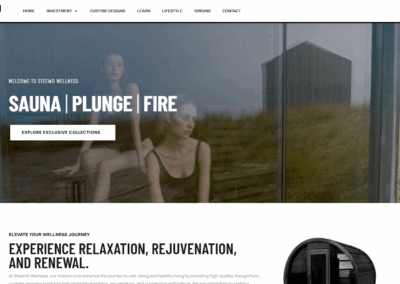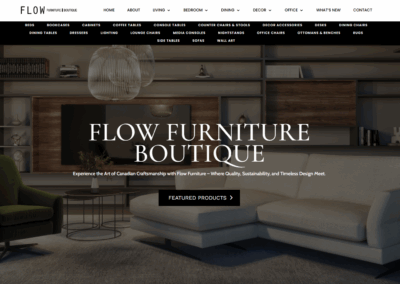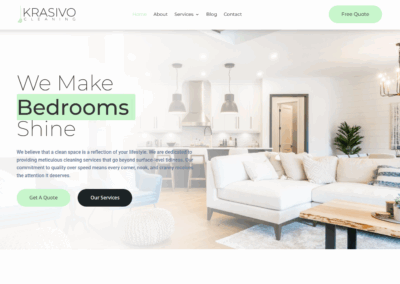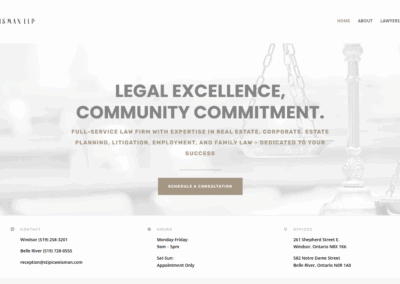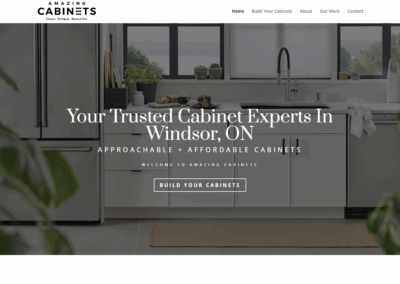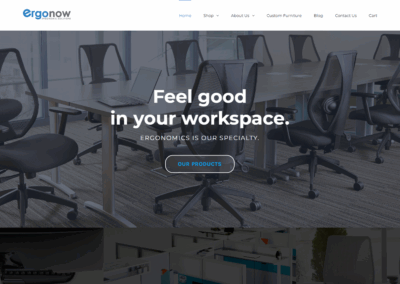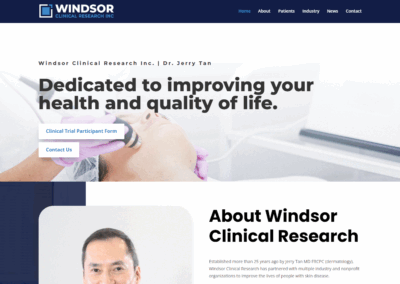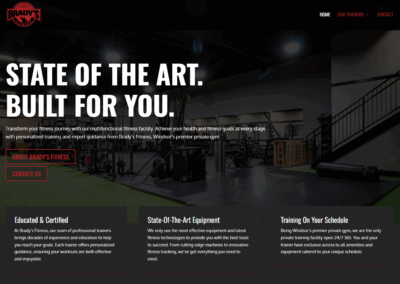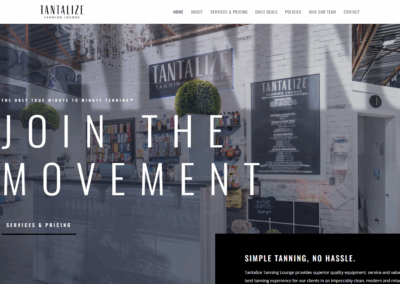Small Business Web Design Services.
Meaningful websites that represent your business best
Get Your Business Online.
In Today’s online world – great website design is crucial for businesses. It can attract customers, enhance user experience, and elevate your business.
Role of a Business Website
A business website acts as a storefront. It allows potential customers to learn about products or services at 24/7/365. With a well built website, we can showcase products, share customer reviews, and provide essential contact information for customers to touch base.
Our website should also be a hub for customer interaction. Features like contact forms, live chats, and FAQs enhance user experience. This engagement can lead to higher conversion rates and customer loyalty.
How To Get Started With Your Business Website.
WHAT WE OFFER
Here’s what you need to know to get your business website up and running — simple steps to get started and set yourself up for success online.
Choose A Domain Name
A custom domain name is the online address of your website. It should be memorable, reflect your brand, and be easy to spell. We recommend using a .com extension because it is widely recognized. However, depending on your business, other options like .net, .org or .io might be suitable.
Web Hosting and Support
Web hosting is the service that makes your website accessible on the internet. Reliable hosting ensures your site loads quickly and remains available to visitors. Like us at Pivot Creative Media, most web designers and developers offer all-inclusive packages that includes hosting, support and development.
Branding, Color Palette and Style
Choosing the right colors and style is a key part of website design. We should start by selecting a color palette that aligns with our brand’s personality. Colors can evoke different emotions and should be chosen to represent our brand accurately.
Design & Development
Great design starts with user experience — clear menus, smart layouts, and easy navigation. Visual consistency, accessibility, and mobile responsiveness are also key to making sure your site looks and works great for everyone, on any device.
Intuitive Site Navigation
An intuitive site navigation ensures that visitors can easily find what they are looking for. We should use clear, simple categories like Home, About, Services, and Contact.
It’s important to use drop-down menus for subcategories. For instance, under Services, we might include sub-items like Consulting, Design, and Support.
This helps avoid cluttering the main navigation bar. Consistent placement of navigation elements, usually at the top or side of the page, is also vital. Internal links on high-value pages guide users to related content effortlessly.
The Importance of a Well-Crafted Homepage
The homepage acts as a first impression. It should be visually appealing and functional. Elements like a catchy headline, a brief introduction, and clear calls-to-action help achieve this.
We should also include high-quality images and branding elements like logos and color schemes. This reinforces our brand identity.
Featuring snippets of key content from other pages, like recent blog posts or special offers, keeps the homepage dynamic. It should load quickly and be optimized for both desktop and mobile devices to enhance user experience.

OUR ADVANTAGES
Why Partner with Pivot for Your Web Design Needs?
We're different than the bigger guys
Unlike larger agencies, we run lean — which means you’re never just a ticket number. Our smaller, focused team gives your project the attention it deserves. We’re fast to respond, easy to reach, and deeply invested in your success. When you work with Pivot, you’re getting direct access to the people actually doing the work — not layers of account managers or offshore teams.
Comprehensive Approach
We approach website design and development holistically, ensuring every aspect of your site is meticulously crafted and aligned with your business goals.
Experienced Team
As a web design agency, we bring a wealth of experience and creativity to every project.
Dedicated Support
We believe in building long-term relationships, whether your are migrating a website, or building a new website with us, we offer support and guidance every step of the way.
Get started with us at Pivot Creative Media today. We create websites that set you apart and actually bring results.
Ready To Get Your Business Online?

“Pivot Creative Media was excellent in helping our office improve the functionality of our website and displaying real time information to the public we serve.”

Sun County Realty
Sun County Realty
Frequently Asked Questions
How do I create a simple yet effective website for my small business?
Start with a clean layout and straightforward navigation. Choose a design that reflects your brand. Make sure your content is clear and easy to read. Use high-quality images and keep your text concise. Test your website on different devices to ensure it looks good everywhere.
What are the key features to include in a small business website?
Key features include contact information, an “About Us” page, and a blog or news section. Adding customer testimonials and case studies can build trust. Ensure there is a clear call to action on every page. An easy-to-use navigation menu is also essential.


